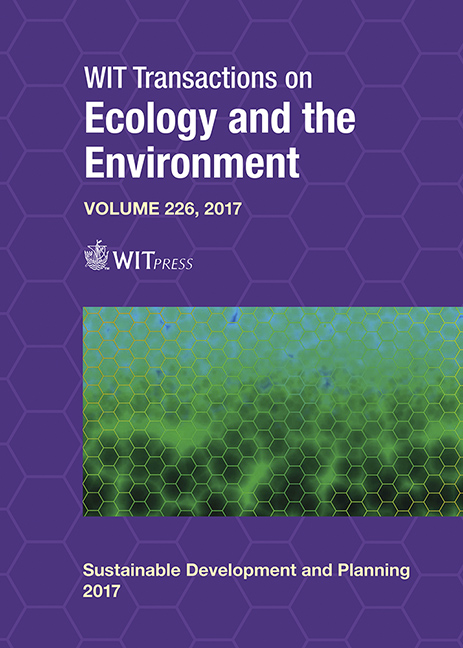GUIDELINES FOT UPGRADING QUALITY OF LIFE IN LOW INCOME AREAS: A CASE STUDY – SABRA-TARIK JDIDEH, BEIRUT, LEBANON
Price
Free (open access)
Transaction
Volume
226
Pages
13
Page Range
391 - 403
Published
2017
Size
1,267 kb
Paper DOI
10.2495/SDP170341
Copyright
WIT Press
Author(s)
MAGED YOUSSEF, NOUR EL BABA
Abstract
Rapid urbanization, one of the greatest socio-economic changes during the last few decades, has caused the burgeoning of new kind of slums, the growth of squatter and informal settlements all around the rapidly expanding cities of the developing world. Urban populations have increased explosively in the past fifty years and this has continued gradually. Governments’ neglect to the low-income areas has generated the worst representations of urban poverty and inequality, having the highest concentration of poor people and the worst living conditions. This paper sheds the light on the problem of the existing complications in low-income areas on the social, educational, economic, cultural and environmental era which are experiencing a massive change in the quality of life for the low-income people. Ignorance of such glitches led the community to collapse, while people have their fundamental rights to live with basic dignity and in decent conditions. This paper, therefore, aims to produce guidelines for upgrading quality of life in low income areas. The Lebanese capital, Beirut, is one of the cities in the Middle East that has many deteriorated low-income areas due to several reasons. As a scoped case study, the paper analyzes the low-income area; Sabra-Tarik Jdideh, Beirut, which is mostly inhabited by refugees, homeless children, and fragmented families. In order to survey the current situation of Sabra’s inhabitants, the paper follows a field methodology using interviews and a questionnaire. This methodology investigated the complications of low-income Sabra inhabitants and concluded with guidelines to upgrade the quality of life for them. These guidelines can be generalized on all low-income areas taking into consideration the special circumstances for every area. Consequently, upgrading the quality of life in low income areas can guarantee improving the educational, cultural, economic, environmental and social concerns of low income inhabitants.
Keywords
architecture, quality of life, upgrading, low income areas, guidelines





